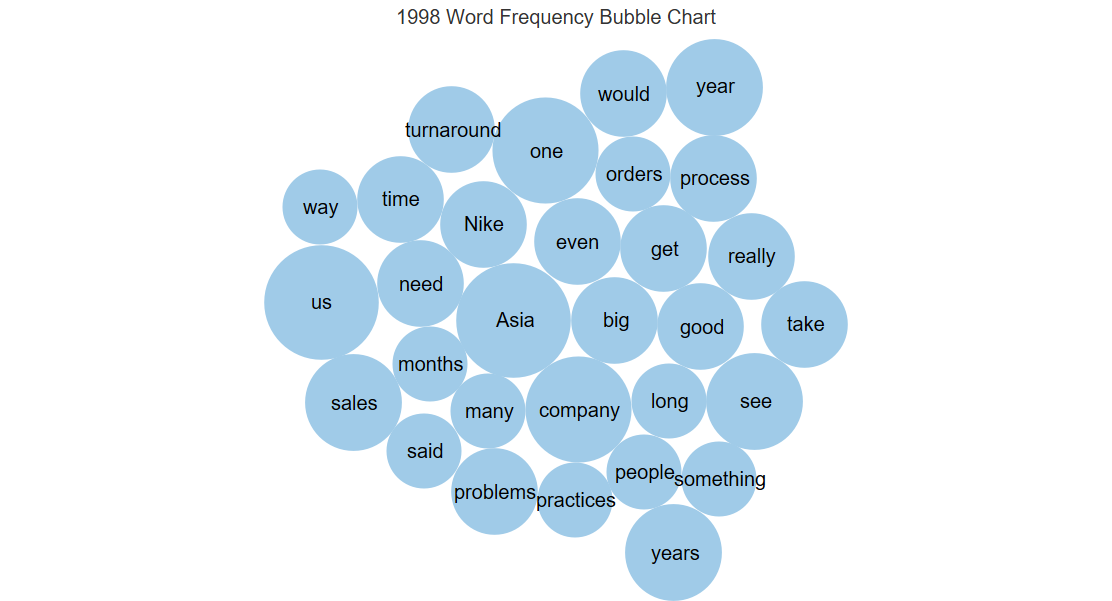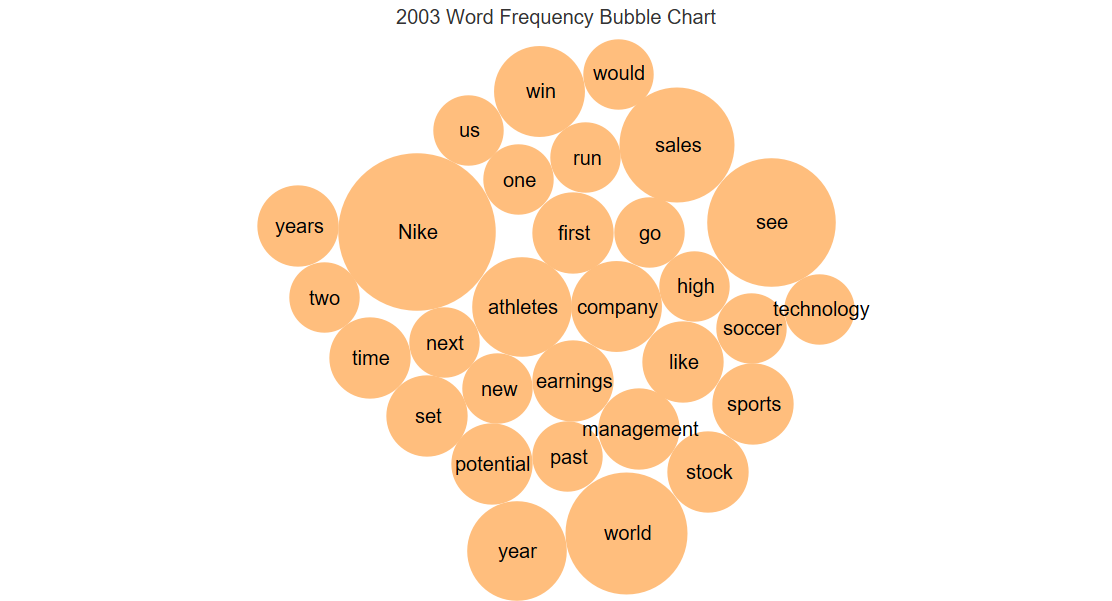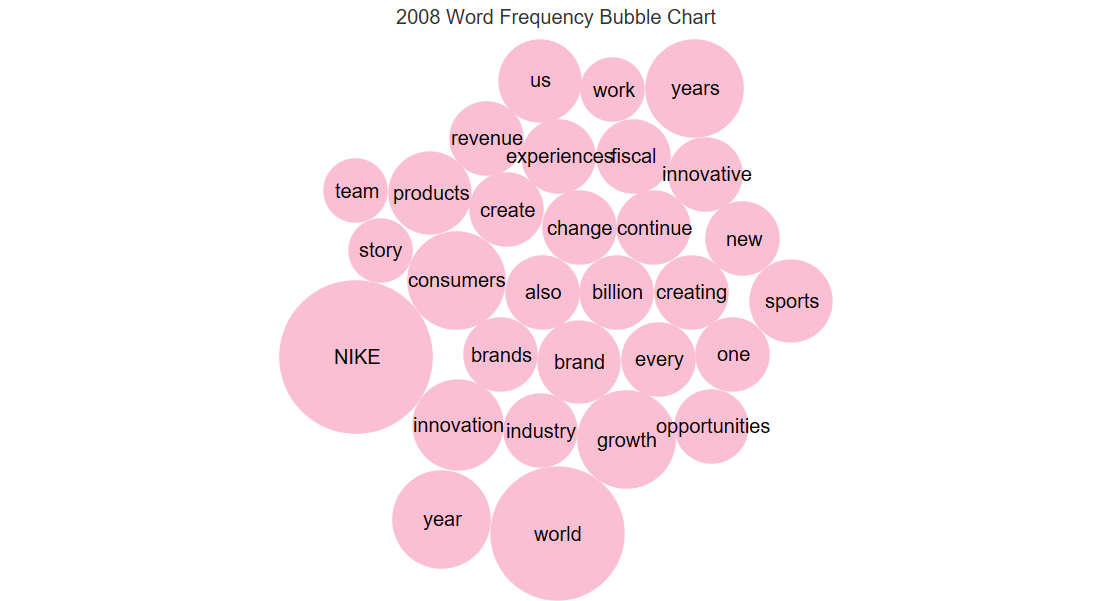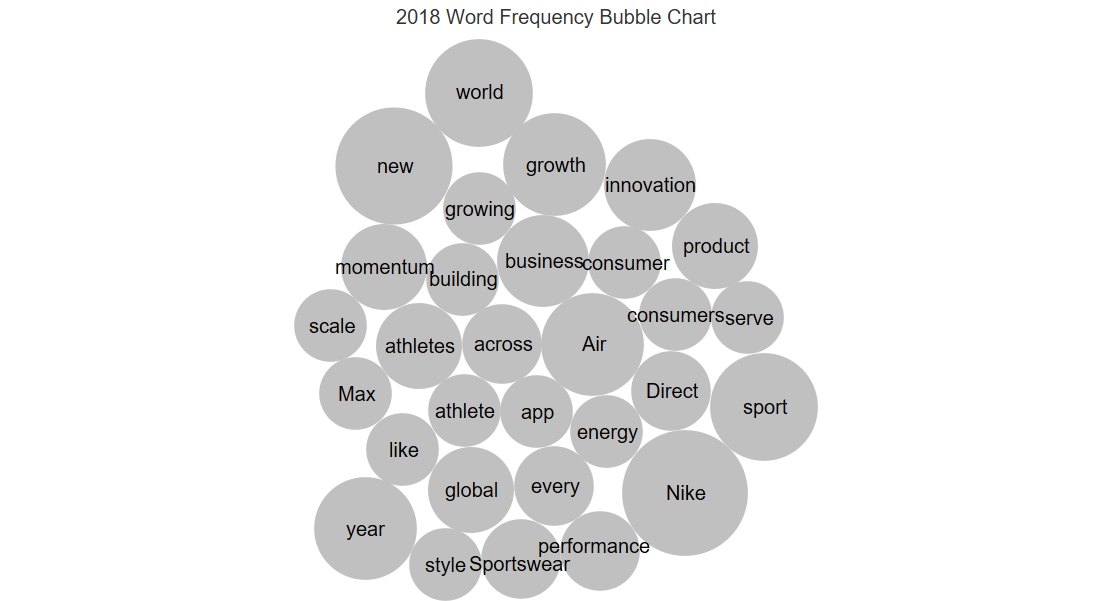Today, Nike is the largest sportswear company in the world. Third-party contractors outside the United States manufacture almost all Nike products. The company itself is the copyright holder of the brands, develops product designs, and owns a network of stores, as well as NikeTown shopping centers. Throughout its history, Nike utilized different methods for growth, including the acquisition of other brands, and outsourcing the production to other countries where labor is cheaper. These changes over time are reflected in annual reports, which include the CEO’s letter to shareholders. This paper provides a summary of the conducted analysis and shares several conclusions based on what vocabulary the CEOs used at different periods of time when addressing the stockholders.
Asia as a Target – 1998 Letter

In 1998, Nike’s CEO was Phil Knight, who had been on this role since the company was founded in 1964. In his letter to the corporation’s shareholders, Knight reflected on the challenges that the company faced and often concentrated on Asia (Nike, 1998). In fact, since the 1990s, the company has been regularly criticized for its products being manufactured in factories where labor laws are violated (Nike, 1998). The significant portion of Nike’s factories is located in China. The word “Asia” is the most used – it occurs seven times in the text. Among other frequently used words are “company,” “turnaround,” “problems,” “process,” and “sales.” Without reading the letter, it can be assumed that the CEO was talking about both sales problems and challenges with the company processes in Asia. The following bubble chart provides an overall picture of the frequency.
World as a Target – 2003 Letter

Phil Knight was still the CEO in 2003, and the company was on the verge of changes. While the 1998 letter put Asia on the central stage, Knight’s message in 2003 shared Nike’s global plans with its shareholders (Nike, 2003). The bubble chart of the word frequency shows several more interesting points. Among other frequently used words are “athletes,” “soccer,” “sports,” and “technology.” It can be supposed that the company’s new strategy is to grow by sponsoring famous athletes, including soccer players. The word “technology” is also used by the CEO, though not as often as “sales” and “world.” By looking at the chart, it can be perceived that the CEO believed that investing in sports and technology would lead to not only higher sales volumes, but also to the company’s recognition in the world. After all, soccer is among the most popular sports in the world.
Continuing with Global Strategy – 2008 Letter
In 2008, Nike had a different chief executive – Mark Parker had been already serving for 2.5 years (Nike, 2008). In his letter to the shareholders, he said that Nike was a company with a growth mindset (Nike, 2008). After running a script to retrieve the count of each unique word, it can be said that Nike was going to continue expanding to other markets – “world,” “sports,” “growth,” and “brand” are among the most frequent words that were encountered in the text. The most interesting detail, however, is that the words “innovation” and “opportunities” appear for the first time. Parker may have considered producing innovative products to be vital for creating opportunities in sports, thus attracting more people, achieving growth, and promoting the brand. In summary, Parker took the roadmap presented by the previous CEO and founder Phil Knight – the primary objective of the company was to achieve growth and recognition in the world.

Toward Innovation – 2014 Letter
Because the world of sports is dynamic and fast-paced, Nike needed better solutions to meet contemporary challenges while retaining the company’s position as the global leader in sportswear. Parker, in 2014, emphasized the importance of incorporating innovative technology into new products because the business of sports is evolving rapidly, and the competition is tense (Nike, 2014). The word “growth” stays among the most frequently used words. However, “innovation,” “business,” “consumer,” and “products” are also prevalent. Key takeaways from this statistic are that the company’s mission is to bring innovation to sports gear, and focus on consumer needs to create useful and demanded products. While relying on only word counts may not be as objective, the contents of the letter do align with conclusions. The word “innovation” can also be combined with “revolutionary,” “digital,” and “unmatched.” In this case, “innovation” is the most frequent word in the text.
Innovation Manifested – 2018 Letter
While in previous letters, the CEO primarily shared business objectives that should concentrate on innovation to provide better products, in 2018, Parker shares the results. The word “Air” is the most frequently used word in the letter and is connected with the new line of innovative shoes called Air Max (Nike, 2018). Parker emphasizes the importance of this platform in delivering better performance for professional athletes (Nike, 2018). Other frequently-used words such as “growing” and “momentum” provide a hint on the fact that Air Max is among the fastest-growing shoe brands in the world. It is a significant factor for the company’s growth in the global arena. It is interesting that the word “app” appears several times in the text. It can be supposed that Nike is planning to combine technology and sportswear by developing smart shoes that can be managed by mobile applications.

Trajectory of Key Words Over Time
The overall picture of how Nike’s strategies shaped over history can be obtained by l

ooking at the frequency of words “innovation,” “growth,” and “world” in the CEO’s letters. It can be seen that in the late 1990s, the company did not think about globalization and expanding to new markets. It also did not include using technology to bring innovation to its products and to ensure sustainable growth. In 2003, Nike started viewing the world as a market it needs to penetrate. In subsequent years, Nike began to develop strategies to achieve the necessary results. This viewpoint can be proved by looking at how often the CEO started using the words “innovation,” “world,” and “growth.” Almost in every letter of the last three chosen time-periods, the most frequently used words are the three mentioned words.
Conclusion
Letters to shareholders provide a brief overview of the current objectives of a company. By analyzing the word occurrences in several of Nike’s letters, it was possible to see how Nike grew to become one of the most innovative sportswear companies in the world. Currently, the company is concentrated on sustainable growth, and the primary instruments for achieving this goal are to deliver innovative products to the worldwide audience. This paper drew several conclusions based on the word counts in the CEO’s letters – Nike achieved its positions by gradually acquiring a growth mindset and utilizing technology to meet consumer needs and demands.
References
Nike. (1998). Letter to shareholders. Web.
Nike. (2003). Letter to shareholders. Web.
Nike. (2008). Letter to shareholders. Web.
Nike. (2014). Letter to shareholders. Web.
Nike. (2018). Letter to shareholders. Web.